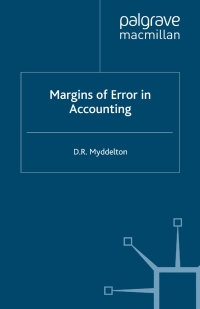


Kragan Clothing Company manufactures its own designed and labeled athletic wear and sells its products through catalog sales and retail outlets. While Kragan has for years used activity-based costing in its manufacturing activities, it has always used traditional costing in assigning its selling costs to its product lines. Selling costs have traditionally been assigned to Kragan's product lines at a rate of 70% of direct materials costs. Its direct materials costs for the month of March for Kragan's "high-intensity" line of athletic wear are $410,000. The company has decided to extend activity-based costing to its selling costs. Data relating to the "high-intensity" line of products for the month of March are as follows. Overhead Rate Activity Cost Pools Sales commissions Advertising-TV Advertising-Internet Catalogs Cost of catalog sales Credit and collection Cost Drivers Dollar sales Minutes Column inches Catalogs mailed Catalog orders Dollar sales $0.05 per dollar sales $300 per minute $10 per column inch $2.50 per catalog $1 per catalog order $0.03 per dollar sales Number of Cost Drivers Used per Activity $919,000 240 1,900 58,300 8,900 $919,000 Compute the selling costs to be assigned to the "high-intensity" line of athletic wear for the month of March (1) using the traditional product costing system (direct materials cost is the cost driver), and (2) using activity-based costing. Traditional product costing Activity-based costing Selling cost to be assigned Combat Fire, Inc. manufactures steel cylinders and nozzles for two models of fire extinguishers: (1) a home fire extinguisher and (2) a commercial fire extinguisher. The home model is a high-volume (54,000 units), half-gallon cylinder that holds 2 1/2 pounds of multi-purpose dry chemical at 480 PSI. The commercial model is a low-volume (10,200 units), two-gallon cylinder that holds 10 pounds of multi-purpose dry chemical at 390 PSI. Both products require 1.5 hours of direct labor for completion. Therefore, total annual direct labor hours are 96,300 or 1.5 hours x (54,000 + 10, 200)) Estimated annual manufacturing overhead is $1,566,090. Thus, the predetermined overhead rate is $16.26 or ($1,566,090 - 96,300) per direct labor hour. The direct materials cost per unit is $18.50 for the home model and $26.50 for the commercial model. The direct labor cost is $19 per unit for both the home and the commercial models. The company's managers identified six activity cost pools and related cost drivers and accumulated overhead by cost pool as follows. Estimated Use of Drivers by Product Commercial Activity Cost Pools Receiving Forming Assembling Testing Painting Packing and shipping Cost Drivers Pounds Machine hours Number of parts Number of tests Gallons Pounds Estimated Overhead $83,750 151,900 401,450 48,960 52,580 827,450 $1,566,090 Estimated Use of Cost Drivers 335,000 35,000 217,000 25,500 5,258 335,000 Home 215,000 27,000 165,000 15,500 3,680 215,000 120,000 8,000 52,000 10,000 1,578 120,000 Instructions (a) Under traditional product costing, compute the total unit cost of each product. Prepare a simple comparative schedule of the individual costs by product (similar to Illustration 17-3 on page 837). (b) Under ABC, prepare a schedule showing the computations of the activity-based over head rates (per cost driver). (c) Prepare a schedule assigning each activity's overhead cost pool to each product based on the use of cost drivers. (Include a computation of overhead cost per unit, rounding to the nearest cent.) (d) Compute the total cost per unit for each product under ABC. (e) Classify each of the activities as a value-added activity or a non-value-added activity. (1) Comment on (1) the comparative overhead cost per unit for the two products under ABC, and (2) the comparative total costs per unit under traditional costing and ABC









